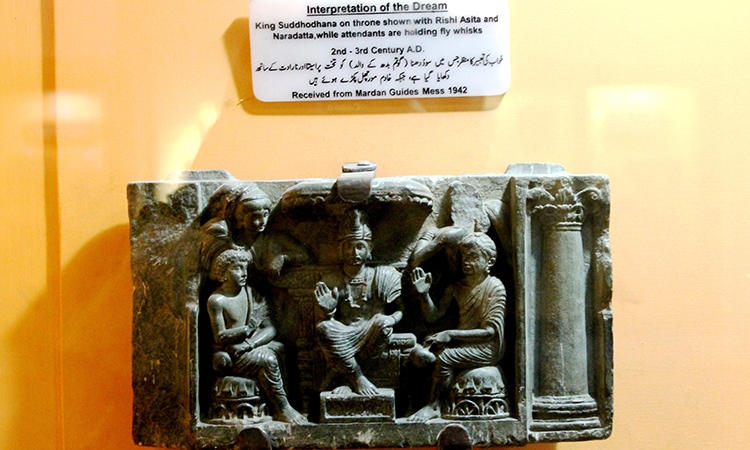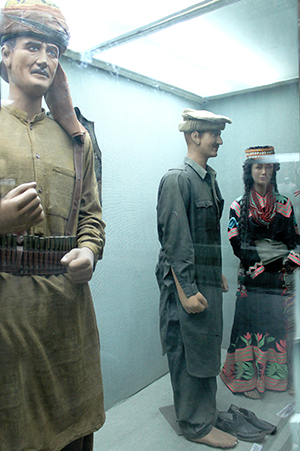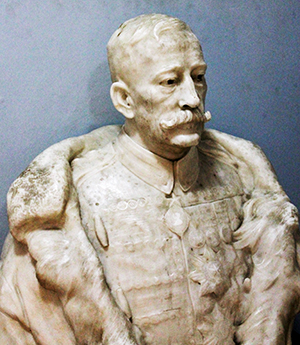Written by: Yusra Hussain
Posted on: February 12, 2016 | 
A Buddha sculpture
In ancient times, Peshawar and its adjoining regions were referred to as Gandhara, a region that played a central role in giving birth to Buddhist civilization. Hence, the ground floor of the museum is dedicated to Gandharan art and history. As you enter the museum, you are welcomed by Buddha statues of various sizes. From small to large to enormous, the entire floor is adorned with these statues. British historians and antiquity hunters dug out places where the history of Buddha was buried, and carried the evidence in the form of statues and stone-carved panels to be stored here. At first glance, they may seem like nothing more than a variety of statues and sculptures on display, but when you actually follow the lead, picking up from the very start, you get a thorough understanding of the story of Buddha – from the dream that his mother had before his birth, to his death and post-death ceremonies.


One can’t help but be amazed at the way Buddha’s whole life story has been told through these stone panels, as carving pictures on stone was among the most effective ways to preserve history in that age. Although each carved stone panel is briefly described in Urdu and English on a plaque nailed beside it, you can also get the help of a guide at the museum in interpreting the pictorial representations.
The adjacent sides of the gallery contain further statues of Buddha in a variety of meditation poses. A model of a stupa (a worshipping structure around which Buddhists meditate) is also present in the museum. This place occasionally welcomes Buddhists from around the world, who come to Peshawar especially to witness and worship these brilliantly preserved statues.
The first floor of the museum is dedicated to the history and culture of Khyber Pakhtunkhwa, as well as Islamic historical books and writing scripts. One side of the gallery preserves traditional as well as modern musical instruments of this region. It also contains antique jewelry, pots and utensils, and common household items of the past. Another section contains mannequins wearing traditional outfits from various regions within Khyber Pakhtunkhwa. You will also find life-size effigies that people of Kalash (a part up in the north of Khyber Pakhtunkhwa) used to carve out of wood in honor of the deceased, showing their life achievements.

The hallway on either side has the rich history of Peshawar preserved in the form of framed pictures. This includes major historical events, such as Quaid-e-Azam’s visit to Peshawar and the unfortunate Qissa Khawani shooting in the 1930s. Also on display are paintings of Sikhs who once ruled this region. One more important sculpture is of Sir George Olaf Roos-Keppel, the Chief Commissioner of NWFP (former name of Khyber Pakhtunkhwa) from 1908 till 1919, who is also considered as one of the founders present at the foundation stone ceremony of the renowned Islamia College Peshawar. The clothes and equipment used by warriors during the sword wars have also been preserved in the museum, which show the intensity and ferocity of the wars fought at the time.
The Islamic history section of Peshawar Museum has preserved ancient handwritten scripts of the Qur’an. Among the most fascinating scripts is Khat-e-Ghubar, written in such a way that an entire verse or page of the Qur’an fits within the script. Furthermore, the sealed, handwritten royal messages of the Mughal emperors have also been preserved.
The Peshawar Museum is a wonderful place to visit for those interested in centuries-old history and culture, not just of Khyber Pakhtunkhwa, but also other areas of the subcontinent. It counts among the few places that have taken steps to preserve the supremely rich heritage and information of this region in a responsible manner, and thus commands a visit from every history and culture enthusiast.
You may also like: